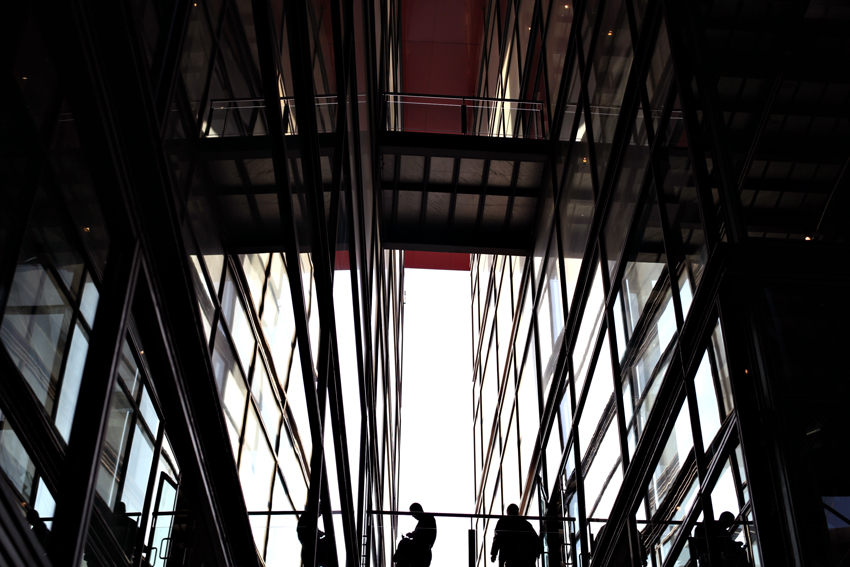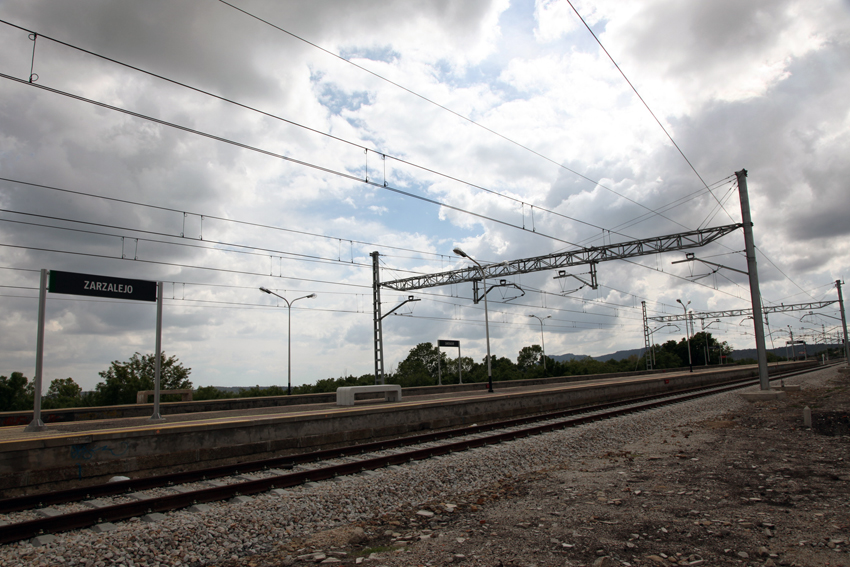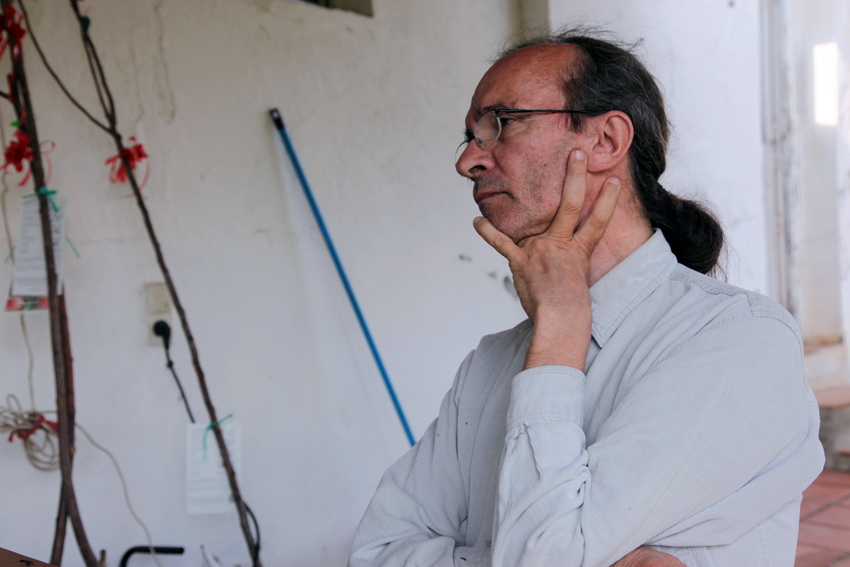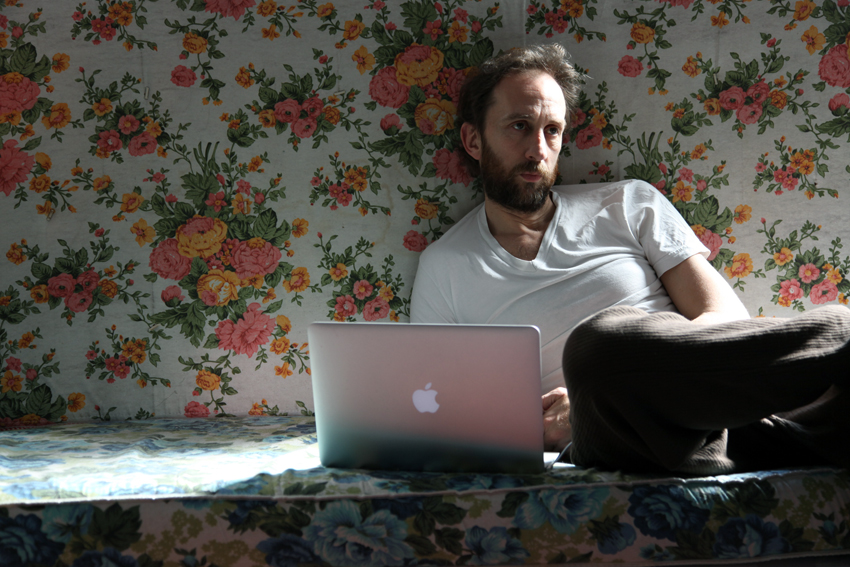Actors / agencies of the scene addressed by the interview:
Jaime Conde-Salazar
- Fields of study/research: art history, dance history, performance studies, dramaturgy
Projects
- www.continuumlivearts.com
- Colección “Documentos de Danza” (Universidad de Alcalá)
- Cairon. Revista de Estudios de Danza
- Aula de Danza Estrella Casero de la Universidad de Alcalá
concepts / themes > lenses:
- critical practices related to the reflection
(creating the space and conditions for theoretical and artistic reflections on practice – Continuum; role of (clear) theoretical concepts vs. doxa, jargon, truisms, ‘common sense’; role of dramaturgy):
Continuum is a project developed together with Marta Muñoz, Celia Díez and Francisco Villar. Continuum has been conceived as a space for research in the fields of writing and live arts. Nowadays, our “public face” is www.continuumlivearts.com. Our “versus” now is not “market/production”. We are much more focused on challenging artistic and academic disciplines and conventional thought based on “theory/practice” dichotomy.
Regarding the (clear) theoretical concepts. During the nineties some historians studied that period in Barcelona and produced seminal works that offer a complete overview of the scene in that city, and that help having a more or less complete idea of what is going on there nowadays. But, as far as I know, nobody has ever made a comprehensive historical approach to the contemporary scene in Madrid. And I think I am not too wrong if I say that “clear theoretical concepts” that could help us thinking about the context we live in, don’t exist, haven’t been produced or discussed yet. Probably, you are the first ones seriously trying to do that job!!! Maybe that’s why I am so enthusiastic and interested about your project.
I prefer using “dramaturgist” rather than “dramaturg” to name my work participating in creation processes. My case is unusual in the Spanish context because I actually was trained in the field of dramaturgy during my MA studies at NY University. It was in that time that I learned for the first time about the role of the “dramaturgist”. But nowadays, I don’t believe that those “courses on dramaturgy” made me more “dramaturgist” than, for example, my studies in Art History. The figure of the dramaturgist is, somehow, special. I don’t think it would make much sense to define a specific curriculum in dramaturgy. Somehow, education in this peculiar field depends more on each one’s interests, desires, experiences, etc. and it is something that each individual has to trace along his/her career. There are many artists willing to incorporate dramaturgists in their creation process. At least I am regularly invited to collaborate in different projects and that makes me think that artists are aware of this possibility. Besides “dramaturgy” is something that can be applied to creation projects but also to other fields like visual arts, programming, cultural management etc. The field of work of dramaturgy is quite wide.
- critical cultural policies
(relations between theory of performing arts and the scene – Cairon, Continuum, and between university and the scene – Aula de Danza):
I think it is not very accurate to talk about “critical cultural policies” in Spain. It doesn’t exist such a thing in this context. Main literature on “theory on performing arts” hasn’t been translated. And most artists and cultural agents aren’t very familiarized with or interested on that field of knowledge. It is true that in Catalunya you could find some isolated independent initiatives that manage to defend a critical approach to artistic production. But the situation in Madrid is very different: neoliberal and ultraconservative cultural policies have totally devastated the cultural landscape. It is true that examples like Matadero, Tabacalera or La Casa Encendida, may give the impression that some critical policies are being developed. And it is also true that what happens in those places is deeply valuable for the city. But we cannot forget that they are sophisticated marketing products that serve the interests of political parties (Matadero, Tabacalera) or banks (La Casa Encendida). None of those initiatives can be clearly called “independent” or “critical”.
Cairon was first published in 1995. It was a project by Estrella Casero, Delfín Colomé and Xoán M. Carreira who directed it during ten years. It was the first academic publication dedicated to “Dance Studies” in Spain. It followed the pattern established decades before by conventional academic publications like “Dance Chronicle” for example. During the first years Lynn Garafola, Janet Adshead-Landsdale, Claudia Celi among others were part of the Editorial Board and all of them were highly committed to the project. Estrella Casero and Delfín Colomé passed away in 2003 and 2008 but Cairon maintained its “classic” profile until Jose A. Sánchez assumed the direction of the Aula de Danza. From that time on the publication has deeply changed and updated to currents times.
Continuum has nothing to do with Cairon. First of all, Continuum is not an academic publication dedicated to Dance Studies. But maybe it doesn’t make much sense trying to define it in opposition. Continuum is a blog dedicated to live arts. “Live arts” doesn’t name a new discipline, genre, style or movement. It is a strategy to elude all those traditional limitations and that allows us to talk about anything that constitutes any kind of experience that can result into writing. Writing is our battleground; it is the act that confirms that some events of the world become part of our memories. Obviously we are especially interested in performing and visual arts… but also in food, TV, films, fashion magazines, you tube… “Live arts” is a concept that allows thinking on culture as a whole, as a complicated system of interrelated phenomena. It also frees us from the narrow approach established by traditional “disciplines”. Continuum as a project that started three years ago. It was presented at Escena Contemporánea 2009. But we didn’t decide to jump into the public sphere in February 2011, when we opened our blog www.continuumlivearts.com. But the blog is not a goal in itself, it is just a convenient expression of what we are doing now. The project will keep changing constantly. Continuum is financially and ideologically (we try at least!!) independent.
University and scene. Spanish University is totally alien to performing arts and very especially to dance. When anything related to those fields happens in Spanish University it is just a punctual “event” resulting from the individual efforts of someone inside the institution that happens to be interested in those fields. Examples like Artea, Archivo Virtual de Artes Escénicas or Master en Cultura Visual y Prácticas Escénicas are just accidents happening because of the immense and generous efforts of José Antonio Sánchez. Universities in Spain do not support performing arts as a field of knowledge. The Aula de Danza was also one of those exceptional examples. It was created in 1989. It was a project directed by Estrella Casero. She was dancer in Ballet Nacional Español but at some point in her career she decided to stop dancing and start an academic career. She got her MA in Dance Studies at Surrey University (UK) writing a thesis on the use of dance during Franco’s dictatorship. She was a very strong woman and step by step she found the way of opening the Aula inside the Universidad de Alcalá. It was just a starting point that would have served as a ground to start the first Dance Studies degree in Spain. She even designed a curriculum approved by the University in 1994. But at that time Conservatoirs found the legal way of claiming their right to be the only institutions offering any kind of degree on Dance. Conservatoirs in Madrid and Barcelona agreed on blocking politically this project and starting themselves a superior degree on dance. Universities didn’t respond clearly to this “move” and the opportunity of starting a Dance Studies degree was frustrated. From that moment on, Estrella Casero found many punctual ways to link academic research and dance. When she passed away in February 2003, the Aula de Danza was going through a very difficult moment. I started directing the Aula in September 2003. It was very clear for me and for the people working with me that we have to reinvent the project anew. We couldn’t expect much complicity from the University. They weren’t interested at all in the Aula but they know closing would have been “very expensive” (politically speaking). So they decided to keep it open with a minimum support. We understood very soon that our duty was to open that space to creation, we had to offer it to artists. We had no economical resources but we had space and a strong belief in the high value of the artistic work. At that time, it didn’t exist in Madrid any place dedicated to support independent artists. Our mission was to become accomplices with artists based in the city and provide basic working conditions for them to develop their projects. According to that we started almost immediately an Artists in Residence program. During that first year Cristina Blanco, María Jerez, Daniel Abreu, Mónica García, Elena Córdoba, Elena Alonso and Teresa Nieto worked at Alcalá. In September 2004 we reached an agreement with La Casa Encendida and we became partners in this project: they provided economical support to each artistic project and a wide visibility. In the following years we also received strong economical support from the Ministry of Culture and we started projects that helped “completing” the Artists in Residence program: Interchanges (partners: Festival Panorama, Rio de Janeiro; Festival Huis/ad/Werf, Utrecht; Festival Complicitats, Barcelona; Alkantara Festival, Lisbon); Documentos de Danza (book series dedicated to creation processes taking place at the Aula); Cultivos de Danza (Festival Madrid en Danza); and Summer Seminars. In September 2006 I decided to quit and move to Teneriffa. La Casa Encendida took care then of the Artists in Residence program during the following years until 2010. In 2007 José Antonio Sánchez assumed the direction of the Aula and started a new project.
- other themes:
what are the concepts and practices you understand critical for / at the contemporary performing arts scene in Madrid?
Concepts: precariousness, neoliberal cultural policies, underground, society of spectacle, lack of resources, lack of connection society-artistic practices.
Practices: homemade projects, low tech-high concept.
do you consider your theoretical work a critical practice at the scene?
First of all, my field of work is not Theory. I am not trained in Philosophy or Aesthetics. Obviously those disciplines nurture constantly my discourse. But I am not sure if it is accurate saying that I do a “theoretical work”. It is true that I write and that writing is my daily practice… but that doesn’t make me a theoretician! So yes, I guess what I do could be called “critical practice” but I am not sure I can go beyond that or say anything more accurate. I could say that I am in the “battleground” and, nowadays, I lack the distance to find the right names or labels to describe my work. I am not linked to any institution, I don’t teach… I just write and, sometimes, I participate in creation processes or projects.
a possible reflection on your international educational background and references (i.e. performance studies) and your work at the local scene.
The most important thing I learned at PS, NYU is that research in any field requires freedom and that the idea of “discipline” or the separation between theory and practice are strategies to control and limit that freedom. Production of knowledge is something that can happen anywhere and it doesn’t necessarily “belong” to education institutions.
I guess, my international experience participating in different projects in very different context, makes me feel very pessimistic about the local scene. Madrid is sick and exhausted and local cultural policies are just a parody. And, although I am based in Madrid, I work very rarely in the city. And I am afraid, this situation is not going to change because it is very probable that the Right will keep governing the city, the region and, unfortunately soon, also the country. If something has characterized the cultural life in the last three decades in the city is ephemerality: green sprouts doesn’t grow or become mature projects.








RSS feed for comments on this post. / TrackBack URI